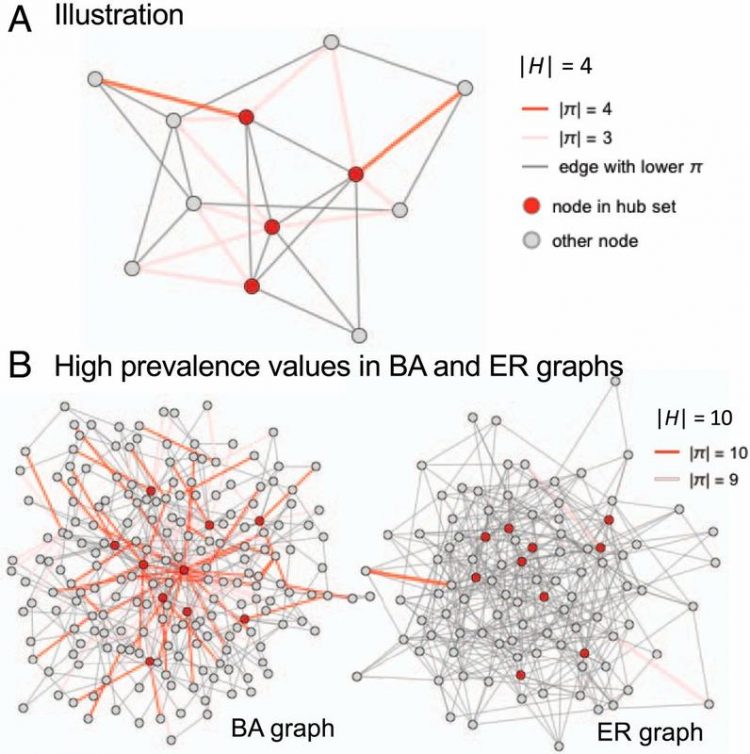Understanding collective behavior in networks better

Illustration of the hub-set-orientation prevalence. Marc-Thorsten Hütt
Hütt and Moretti are breaking new ground with their research. How collective excitation patterns in complex networks can be recognized and investigated is an open question.
For the abstract representation of a real network, the scientists use mathematical graphs consisting of nodes and edges (or links), the pairwise connections between the nodes. “In such graphs, we can then identify local features for collective behavior,” explained Hütt.
In the collective case, excitations along the links often run preferably in one direction. Responsible for this asymmetric use of links are waves, which form around highly interconnected elements in a network, the “hubs”.
If these hubs are also closely interlinked and thus increase their influence on the entire network, the emergence of waves and, along with it, the asymmetric link usage are even more pronounced.
“With the help of relatively simple mathematical indicators, asymmetric link usage can be predicted quite accurately,” said Hütt. “This creates an elegant connection between network architecture and self-organized dynamics within a network.”
Over a period of four years, the duo conducted research on the topic. “I am very pleased that in the end such a clear picture of the connection between network architecture and collective patterns emerged,” said Professor Hütt. The scientists want to continue their work. “There are many other collective patterns that make you wonder what they look like in networks.”
About Jacobs University Bremen:
Studying in an international community. Obtaining a qualification to work on responsible tasks in a digitized and globalized society. Learning, researching and teaching across academic disciplines and countries. Strengthening people and markets with innovative solutions and advanced training programs.
This is what Jacobs University Bremen stands for. Established as a private, English-medium campus university in Germany in 2001, it is continuously achieving top results in national and international university rankings. Its more than 1,500 students come from more than 120 countries with around 80% having relocated to Germany for their studies. Jacobs University’s research projects are funded by the German Research Foundation or the EU Research and Innovation program as well as by globally leading companies.
For more information: www.jacobs-university.de
Marc-Thorsten Hütt
Professor of Computational Systems Biology
Mail: m.huett@jacobs-university.de
Tel.: +49 421 200-3238
Media Contact
All latest news from the category: Life Sciences and Chemistry
Articles and reports from the Life Sciences and chemistry area deal with applied and basic research into modern biology, chemistry and human medicine.
Valuable information can be found on a range of life sciences fields including bacteriology, biochemistry, bionics, bioinformatics, biophysics, biotechnology, genetics, geobotany, human biology, marine biology, microbiology, molecular biology, cellular biology, zoology, bioinorganic chemistry, microchemistry and environmental chemistry.
Newest articles

An Endless Loop: How Some Bacteria Evolve Along With the Seasons
The longest natural metagenome time series ever collected, with microbes, reveals a startling evolutionary pattern on repeat. A Microbial “Groundhog Year” in Lake Mendota Like Bill Murray in the movie…

Witness Groundbreaking Research on Achilles Tendon Recovery
Achilles tendon injuries are common but challenging to monitor during recovery due to the limitations of current imaging techniques. Researchers, led by Associate Professor Zeng Nan from the International Graduate…

Why Prevention Is Better Than Cure—A Novel Approach to Infectious Disease Outbreaks
Researchers have come up with a new way to identify more infectious variants of viruses or bacteria that start spreading in humans – including those causing flu, COVID, whooping cough…



